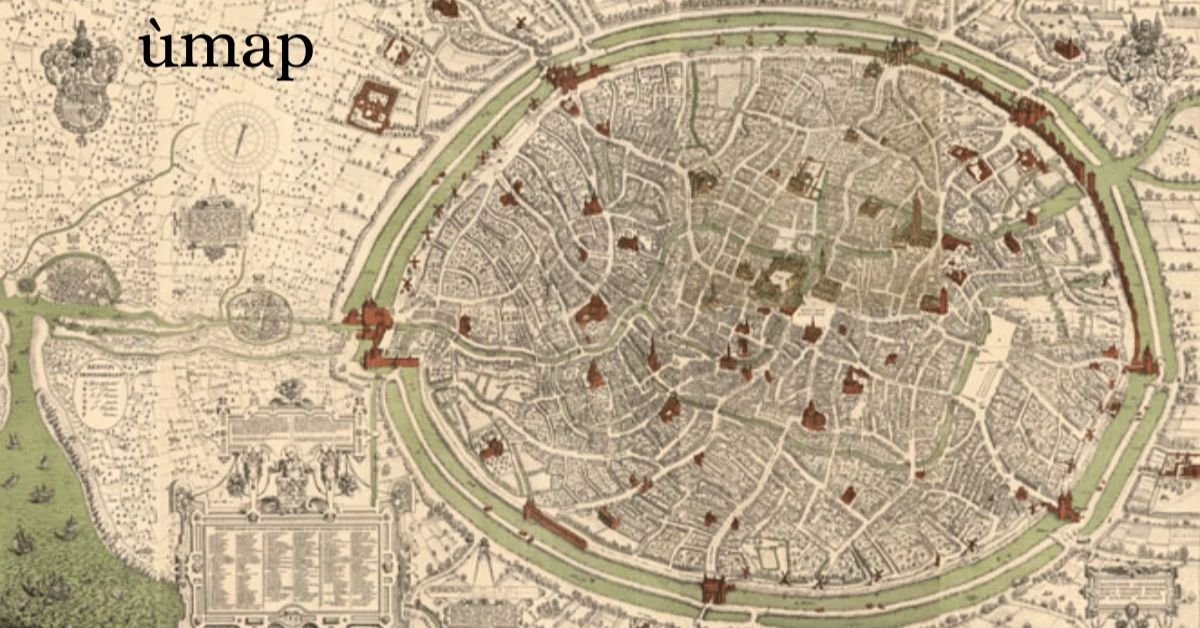Introduction
Today, a map is not just an indication of geographical positions. But has so much more than what people of the past could ever imagine. Smart and dynamic maps that enable the user to manipulate. The data on the map have proved to be essential in the applications of today. Based on the findings ùmap provides an easy-to-use platform. And a great variability of options to generate. And share maps that are based on open-source systems. This paper focuses on explaining what ùmap is, how it works, advantages of using this application, and some of the probable shortcomings one may encounter when using the tool.
What is ùmap?
ùmap is an online map creation tool completely free and open source that lets the user create media in the form of maps. It provides a simple and uncluttered environment that a layman can easily understand and navigate thus a platform to design Interactive Maps. While the static maps are considered common knowledge, ùmap transforms them into instrument with a wide variety of information to be applied on the map.
Key Features of ùmap:
- Customization: ùmap shines with its extensive customization options. Users can personalize their maps by adding various layers of data, including points of interest (POIs), markers, shapes (lines, polygons), and heatmaps. This allows for the creation of maps tailored to specific needs and objectives.
- Data Import: ùmap allows data import from various sources, making it a versatile tool. Users can import data in different formats, including CSV files, spreadsheets, GPS tracks (GPX files), and even web feeds. This flexibility ensures compatibility with a wide range of data sources.
- Interactive Elements: Enhancing user engagement is a key strength of ùmap. Users can add interactive elements to their maps, such as pop-ups containing detailed information about points of interest, clickable markers for user interaction, and tooltips to provide additional context when hovering over specific data points.
- Collaboration: ùmap fosters collaboration by allowing multiple users to work on a single map simultaneously. This feature is valuable for teams working on projects that require shared mapping and data visualization.
- Open-Source Platform: Being open-source, ùmap benefits from a vibrant community of developers and users. This translates to continuous improvement, bug fixes, and the creation of custom plugins to further enhance the platform’s capabilities.
- Ease of Use: ùmap’s intuitive interface makes it accessible to a wide range of users. Users with no prior experience in map creation can learn the ropes quickly, thanks to the platform’s straightforward functionalities and readily available tutorials.
Unveiling the Potential of ùmap:
ùmap’s adaptability makes it suitable for various applications across diverse fields. Here are some examples:
- Urban Planning: City planners can use ùmap to visualize population density, traffic patterns, and public amenities on interactive maps, facilitating data-driven decision making.
- Environmental Monitoring: Researchers and environmental organizations can create maps to track pollution levels, deforestation trends, or wildlife migration patterns, raising awareness and promoting conservation efforts.
- Travel and Tourism: Tourists can build personalized maps highlighting landmarks, restaurants, and transportation options, enhancing their travel experience.
- Business and Marketing: Businesses can use ùmap to visualize customer demographics, market trends, or competitor locations on maps, gaining valuable insights for strategic planning.
- Education and Research: Educators can create interactive maps to illustrate geographical concepts or historical events, engaging students in a visually stimulating way. Researchers can leverage ùmap to share data visualizations with colleagues, facilitating collaboration and knowledge sharing.
These are just a few examples, and the possibilities with ùmap are truly limitless. As user creativity and data availability continue to grow, ùmap will undoubtedly become an even more powerful tool for exploration, analysis, and communication.
Pros and Cons of ùmap:
Pros:
- Free and Open-Source: No licensing fees or subscription costs make ùmap a budget-friendly option for individuals and organizations.
- User-Friendly Interface: The intuitive interface allows users of all experience levels to create interactive maps.
- Highly Customizable: ùmap offers extensive customization options, catering to a wide range of mapping needs.
- Data Import Flexibility: Compatibility with various data formats fosters versatility and broadens ùmap’s application.
- Collaboration Features: The ability for multiple users to work on a map simultaneously facilitates collaborative projects.
- Open-Source Community: The active community ensures continuous improvement and the development of new functionalities.
Cons:
- Limited Base Maps: Compared to established mapping platforms, ùmap offers a smaller selection of base maps.
- Learning Curve for Advanced Features: While the basic functionalities are easy to grasp, advanced features like custom plugins might require some technical knowledge.
- Data Sharing Considerations: As an open-source platform, data privacy concerns regarding user-uploaded content need to be carefully considered.
Conclusion
ùmap remains as a perfect suitable for anyone who wants to build and share maps. I believe, thanks to the operating system’s friendliness open setting options. And adaptability to various applications. This tool is useful for both individuals organizations, as well as researchers.
